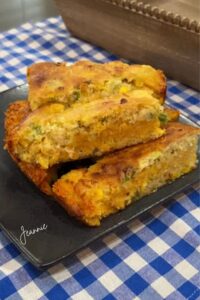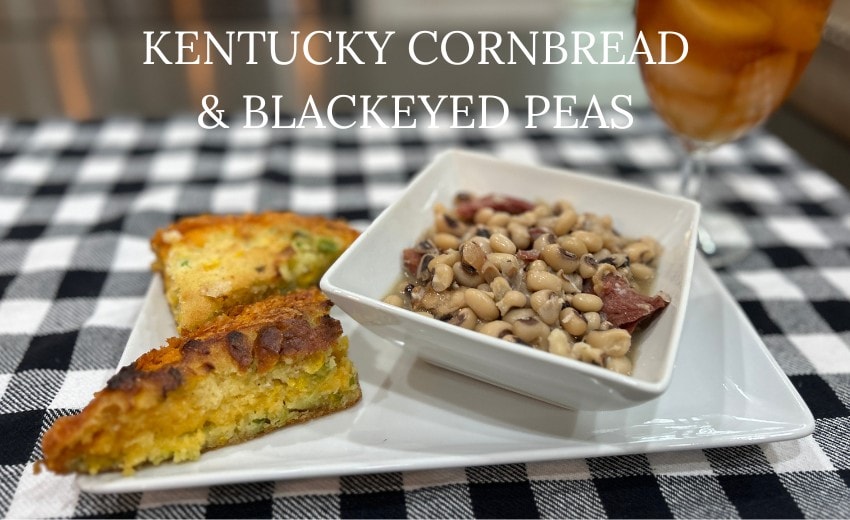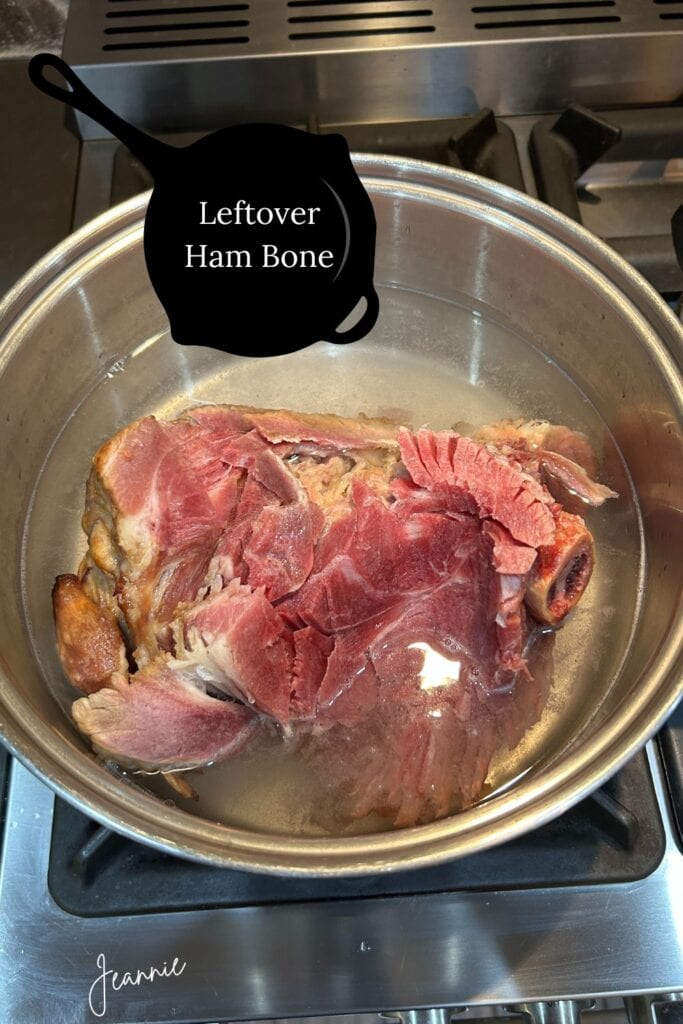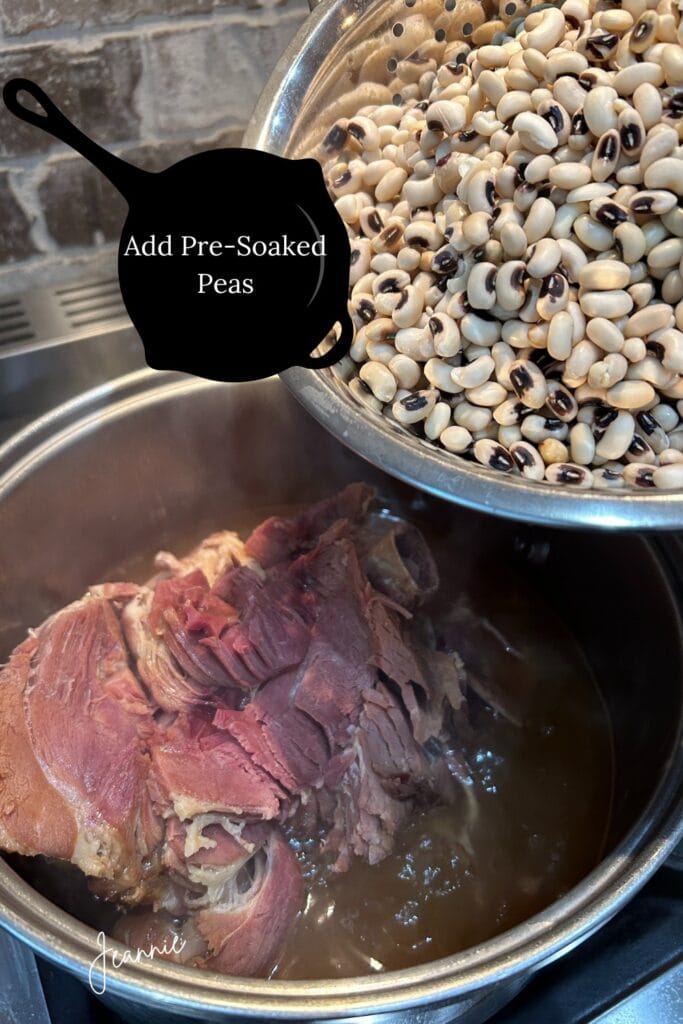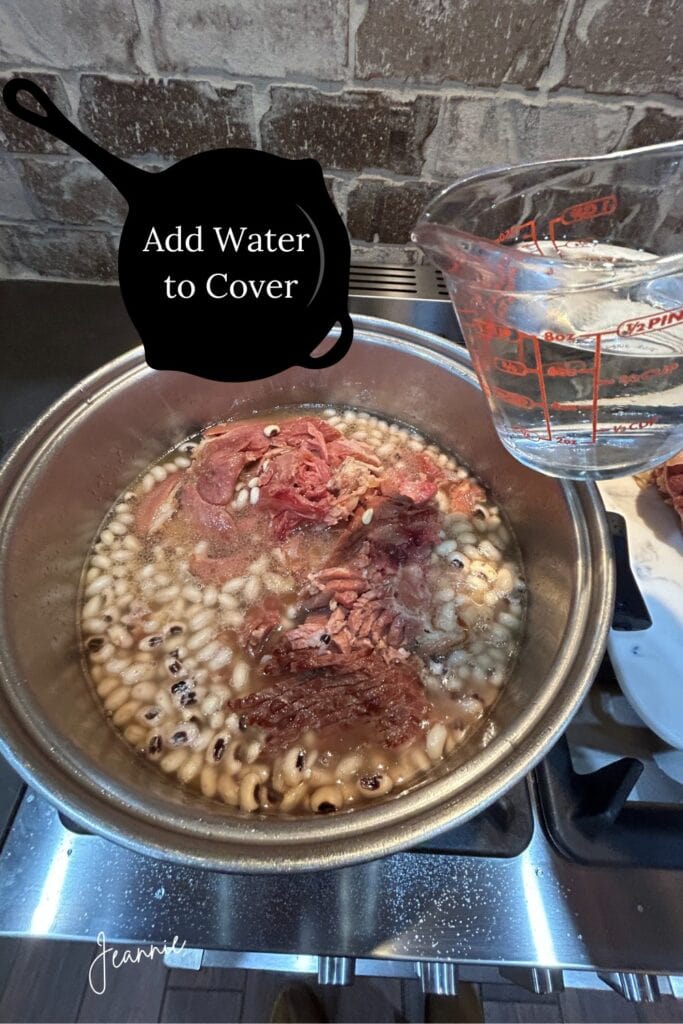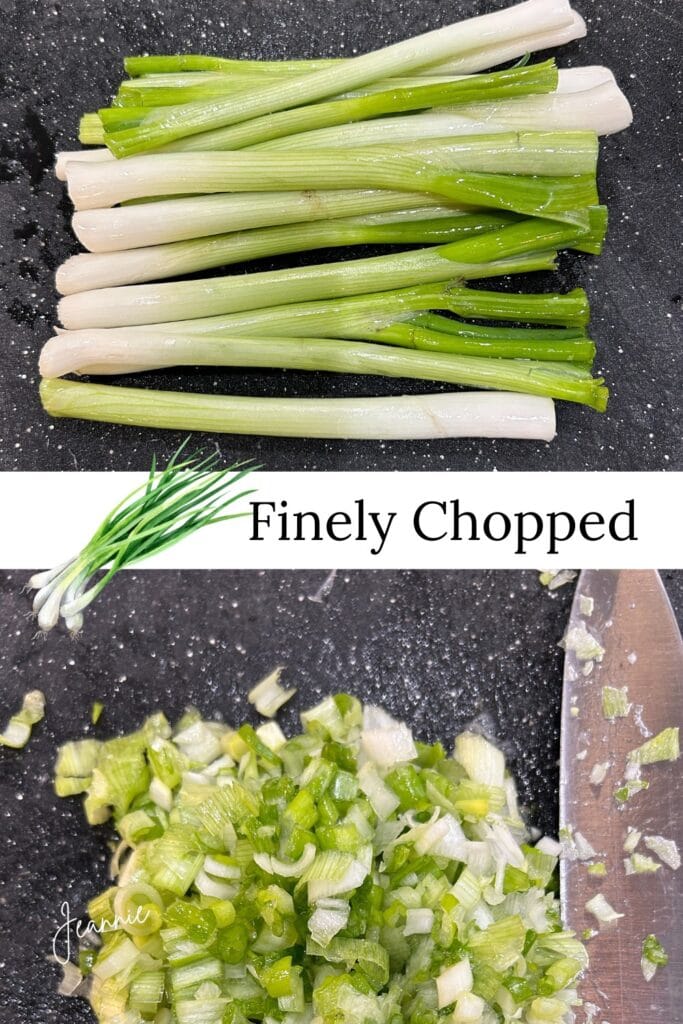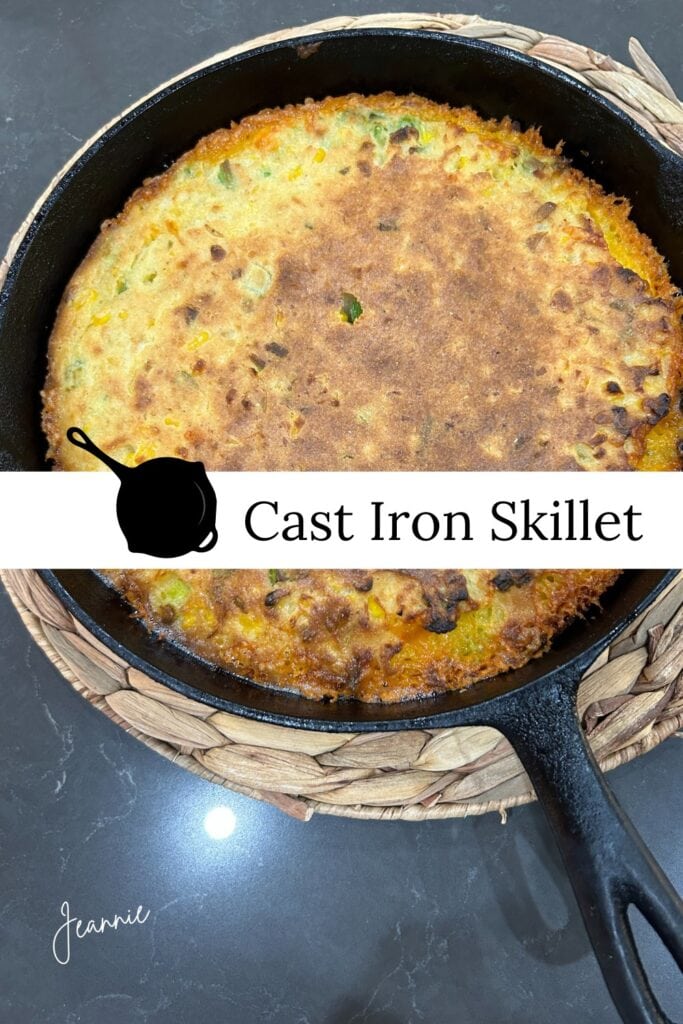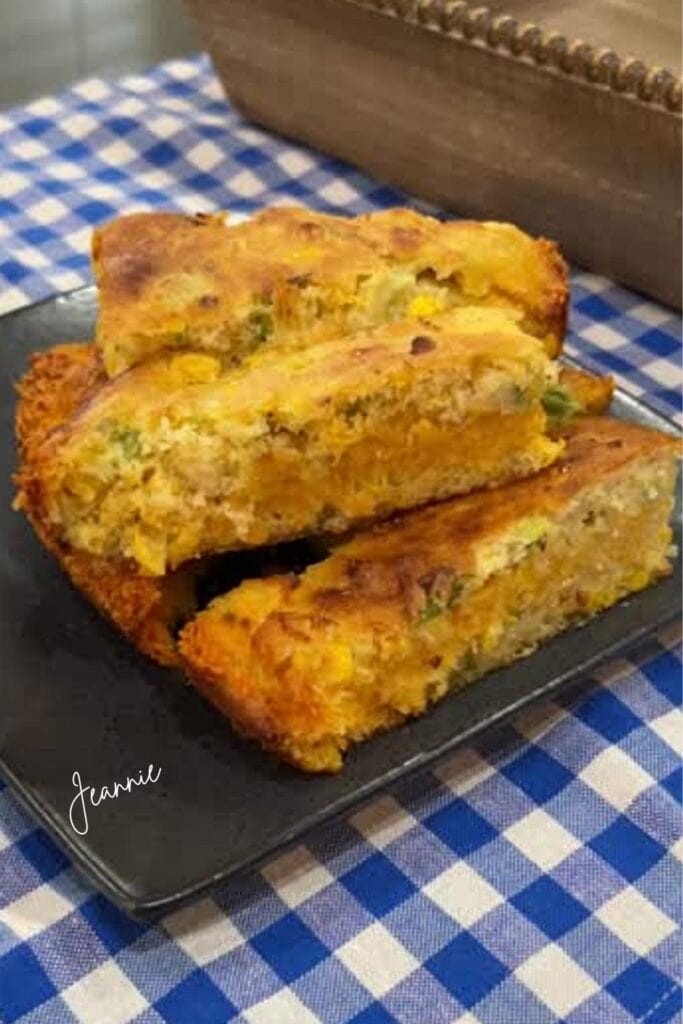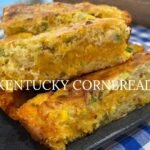Kentucky Cornbread & Black-eyed Peas
Kentucky cornbread is a perfect accompaniment to black-eyed peas! It’s really all you need along with a glass of iced tea))
New Years Tradition
Eating black-eyed peas has always been a tradition in our family. It’s for good luck in the upcoming year. My husband and I have never missed blackeye peas on any New Year even if they had to come out of a can!
Family Recipes
This year I pulled a recipe from a family notebook to go with the peas called Kentucky Cornbread. A brother-in-law introduced it to our family several years ago. It’s really easy to make and great with tomato soup or chili. Well, you can just about eat it with anything, or by itself! This cornbread is loaded with calories so if this is of major importance, you might want to pass on this one.
Growing up on Peas & Cornbread
Peas and cornbread were a staple growing up whether it be summer or winter. In the summer, you had fresh peas from the garden or truck patch. In the winter we ate dried peas that had been harvested and stored in sacks made from flour or feed sack or pillowcases. Sometimes my mother would can pint jars of fresh peas and these were so easy to heat up and eat. Other times she would freeze blanched fresh peas to go in the freezer. Either way, it was a lot of work!
The sack of dried peas (butterbeans or pinto beans) would hang on a nail in the pantry.
Harvesting Black-eyed Peas
After all the peas had been picked that were for eating, canning, or freezing, some would be left on the bush to dry naturally. The dried pea pods would be picked and placed into a cotton pick sack and the opening of the sack tied shut. (The sack used for picking cotton was anywhere from 5-7-10′ in length with a strap that went around your shoulder. The sack would drag along with you while you picked cotton, or in this instance dried peas.)
We stomped around on the sack to beat the peas out of the hulls. Then we would separate the hulls from the peas and pick through them for weevils. Any bad ones were tossed out. They were not washed or anything and placed in a dry bag for future use.
You would get out a cupful or two for a meal and check them again for weevils or bad ones, then rinse and soak them for cooking or go ahead and put them in a pan covered with water if you had a few hours for them to cook tender.
Cooking Black-eyed Peas
Cooking black-eyed peas, the dried variety, takes a little preparation and time. There is always the question to soak or not soak the peas. Either way, they turn out pretty good)))
I like to soak mine overnight, that way it really doesn’t take long to cook them. I didn’t pay that much attention to how long it took when I made this batch, just cook until they are tender.
- Rinse dried beans and cover with cold water. Let them set for a few hours or overnight.
- Drain the water, add to a deep pan, and cover with more water.
This Christmas we had ham at our family dinner, so I saved the hambone and put it in the freezer. My plan was to cook it with the New Year peas. You can see it had a lot of ham left on it…..that was intentional))
- Cook the ham bone in water. Mine was frozen so I cooked it first until the bone was easy to take out.
- Add the pre-soaked peas.
- Add more water as needed. Simmer until peas are tender. Add salt and pepper to taste.
Kentucky Cornbread Ingredients
- 1 3/4 cup cornmeal
- 2/3 cup vegetable oil
- 2 eggs
- 1 cup sour cream
- 1 can cream-style corn
- 3-4 bunches of green onions finely chopped
- 1 cup shredded sharp cheddar cheese
Green Onions
Chop up the green onions. I used two bunches and included part of the tops. It was probably around a half cup full after chopping. My folks don’t like big pieces of onion in anything, so I chopped them up pretty fine.
Mix the cornmeal, oil, eggs, sour cream, cream corn, and onions together. The recipe I had called for 1 1/2 cups of cornmeal, but the batter seemed a little bit thin, so I added a little extra cornmeal.
The 2/3 cup of vegetable is a lot of oil….it really is. I may try changing this on my next batch and reducing that amount to maybe a 1/4 cup and adding some melted butter. You can never go wrong with melted butter…right?
The recipe didn’t say what size can of cream-style corn, so I used a 14.75 oz. Older recipes sometimes leave out some pretty important details! I also added a little salt and pepper.
Cast Iron Skillet
This recipe is made for a cast iron skillet!
Preheat the oven to 450° and grease the skillet well. Pour half of the batter into the skillet, and top with sharp shredded cheddar cheese. The recipe had called for 1/2 cup, but I used a whole cup at least. Then pour the rest of the batter on top of the cheese.
If you want, you could reserve a little of the cheese (or use extra) and sprinkle some on the very top. Bake for 30 minutes at 450°or until a toothpick inserted in the center comes out clean.
Let the cornbread sit for a few minutes before you cut it. Serve hot and enjoy!
More from My Blog
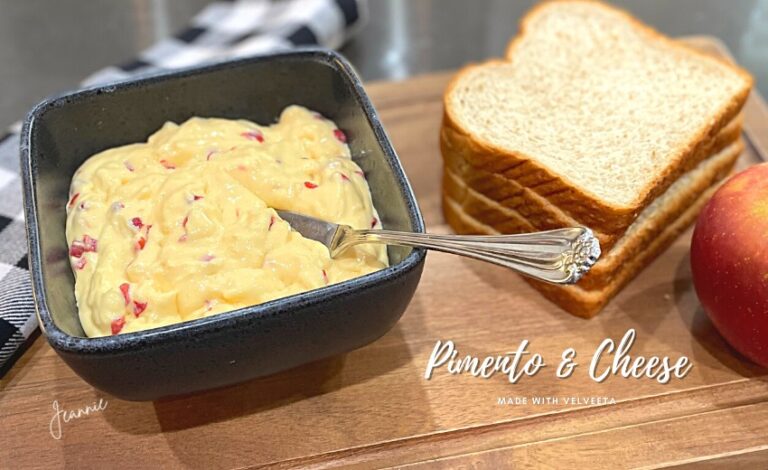
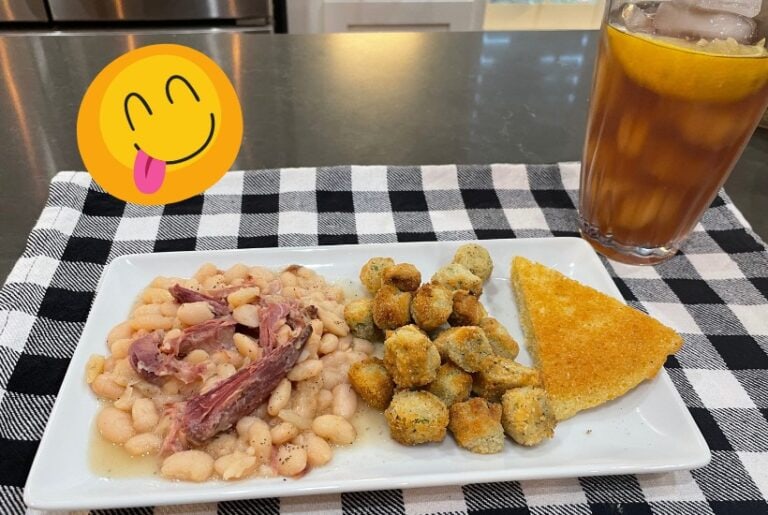
Kentucky Cornbread
Equipment
- Large Cast Iron Skillet
Ingredients
- 1 ¾ cup Cornmeal
- ⅔ cup Vegetable Oil
- 2 Eggs
- 1 cup Sour Cream
- 1 can Cream-style Corn 14.75 oz can
- 2 bunches Green Onions Finely Chopped
- 1 cup Sharp Cheddar Cheese Shred
Instructions
- Preheat oven to 450 ° and finely chop green onions using part of tops.
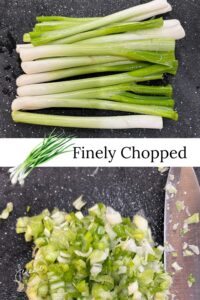
- Mix cornmeal, oil, eggs, sour cream, green onions, and cream-style corn together. Pour half of batter into greased skillet. Sprinkle shredded cheese and add remaining batter. Bake at 450° for 30 minutes or until a toothpick placed in the center comes out clean.
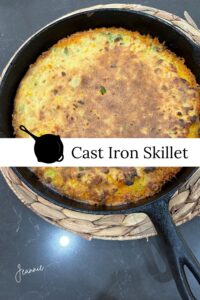
- Allow the cornbread to sit a couple of minutes before slicing. Serve hot.
